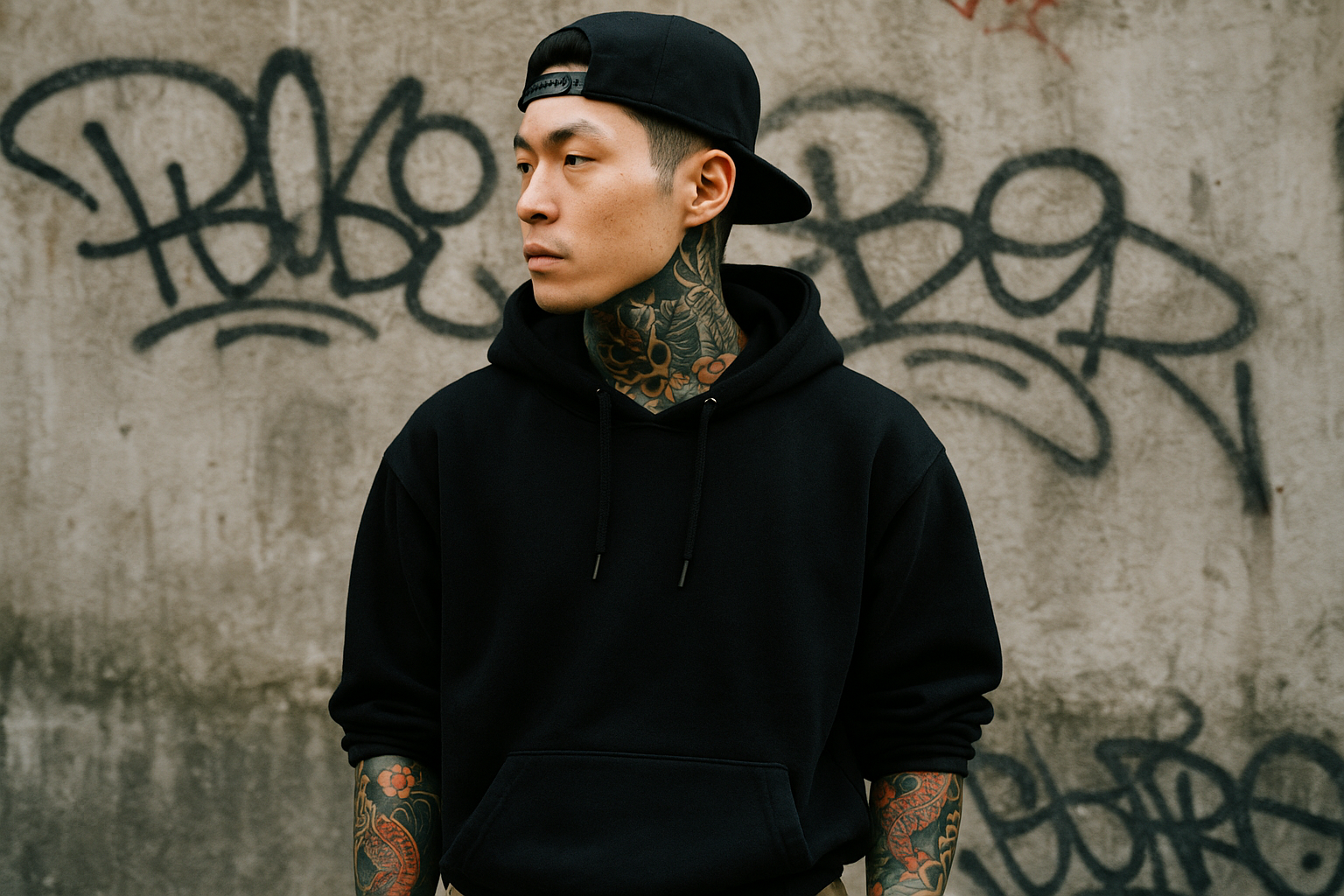For centuries, irezumi tattoos were whispered about in shadows — hidden under kimono layers, associated with criminals, outcasts, and forbidden desires.
Today? They’re on runways in Paris. Worn proudly by women in mesh tops. Paired with streetwear and lingerie.
So how did irezumi go from outlaw art to high-fashion rebellion? And why are more women than ever wearing it — not just on their skin, but on their shirts, jackets, and souls?
Let’s peel back the layers.
🔥 The Taboo Origins of Irezumi
In Japanese history, irezumi wasn’t body art. It was branding.
- Used as punishment for criminals.
- Banned during the Meiji era for being “uncivilized.”
- Linked to the Yakuza in modern decades — full-body suits meant defiance, secrecy, loyalty.
Even in today’s Japan, you can be denied entry to spas, gyms, and beaches if you have irezumi. It still carries stigma and silence.
🖤 But like all things suppressed — it became a language of resistance.
🎨 The Artistic Rebellion Behind the Ink
While Western tattoos flirted with flash art and biker culture, irezumi was slow, symbolic, and layered.
Each design was hand-drawn — often with woodblock inspiration:
- Dragons: Power, wisdom, elemental force.
- Koi fish: Perseverance, identity, destiny.
- Peonies and waves: Beauty clashing with chaos.
- Geisha: Not just beauty — artistry, erotic power, and silent rebellion.
The backpiece became sacred territory. It wasn’t for public display. It was for selfhood — ink as armor.
So when that sacred ink moved from hidden to seen?
The world wasn’t ready.
🖤 Irezumi Meets Fashion: From Fetish to Statement
It started with whispers in streetwear.
Japanese and Korean designers — and later Western rebels — began incorporating irezumi-inspired visuals into:
- Jackets with printed back tattoos.
- Mesh tops layered over illustrated skin.
- Lingerie that revealed ink, not covered it.
- Tees with stylized geisha, dragons, or symbolic Japanese text.
What was once forbidden became fetishized — and then reclaimed.
Fashion stopped asking permission. And women, in particular, stopped apologizing.
🩸 Irezumi stopped being about shame. It became about survival style.
💥 Why Women Are Turning to Irezumi-Inspired Clothing
Because it’s not just about looking “edgy.”
It’s about wearing what you weren’t allowed to say out loud.
Women today use irezumi tattoos (and prints) to say:
- “I survived hell — now I wear it like art.”
- “I don’t need softness to be sacred.”
- “I am the danger you didn’t see coming.”
From street to bedroom to protest, irezumi fashion lets women blend:
- Sacred power 🐉
- Rebellious sensuality 💋
- Personal resurrection 🔥
🛍️ In Vein®: Where Ink Meets Apparel
At In Vein®, we don’t print art — we summon it.
Our irezumi-inspired pieces are for women who:
- Wear backprints like spiritual shields.
- Turn erotic symbolism into survival language.
- Choose tattoos and tees that command space — not beg for it.
👉 Explore our current drops:
- “Tie Me Up” Geisha Backprint Shirt
- “Seduce. Survive. Rise.” Dragon Sigil Tee
- “I Wear the Wounds You Couldn’t Kill” Body Armor Shirt
These aren’t just clothes. They’re rebellion wrapped in cotton.
🔮 Final Thought: You Don’t Have to Be Inked to Be Marked
Not every woman wants to tattoo her skin — but that doesn’t mean the power of irezumi is off-limits.
You can wear the intention.
You can carry the symbol.
You can be part of a centuries-old resistance — whether it’s inked, printed, or whispered under your breath.
Because whether you’re dressing for the streets, the sheets, or your own damn healing…
irezumi belongs to the bold now.
And bold is exactly what you’ve become.


Leave a comment
Your email address will not be published. Required fields are marked *
You must be logged in to post a comment.